Related Research Articles
The Force Research Unit (FRU) was a covert military intelligence unit of the British Army's Intelligence Corps. It was established in 1982 during the Troubles to obtain intelligence from terrorist organisations in Northern Ireland by recruiting and running agents and informants. From 1987 to 1991, it was commanded by Gordon Kerr.

The Dublin and Monaghan bombings of 17 May 1974 were a series of co-ordinated bombings in Dublin and Monaghan, Ireland, carried out by the Ulster Volunteer Force (UVF). Three car bombs exploded in Dublin during the evening rush hour and a fourth exploded in Monaghan almost ninety minutes later. They killed 34 civilians, including an unborn child, and injured almost 300. Together, the bombings were the deadliest attack of the conflict known as the Troubles, and the deadliest attack in the Republic's history. Most of the victims were young women, although the ages of the dead ranged from 4½ months up to 80 years.

Captain Robert Laurence Nairac was a British Army officer in the Grenadier Guards who was abducted from a pub in Dromintee, south County Armagh, during an undercover operation and killed by the Provisional Irish Republican Army (IRA) on his fourth tour of duty in Northern Ireland as a Military Intelligence Liaison Officer.
John Colin Wallace is a British former member of Army Intelligence in Northern Ireland and a psychological warfare specialist. He refused to become involved in the Intelligence-led 'Clockwork Orange' project, which was an attempt to smear various individuals including a number of senior British politicians in the early 1970s. Wallace also attempted to draw public attention to the Kincora Boys' Home sexual abuse scandal several years before the Royal Ulster Constabulary intervened.
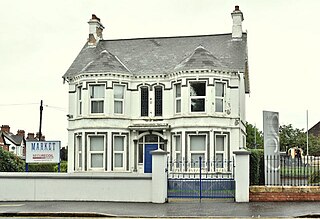
The Kincora Boys' Home was a boys' home in Belfast, Northern Ireland, United Kingdom, that was the scene of serious organised child sexual abuse. It caused a scandal and led to an attempted cover-up in 1980, with allegations of state collusion. On 31 May 2016, the Northern Ireland Historical Institutional Abuse Inquiry (HIA) began examining allegations relating to Kincora, including claims that a paedophile ring with links to the intelligence services was based there. Northern Ireland Secretary Theresa Villiers said that all state agencies would co-operate with the inquiry.

The Miami Showband killings was an attack on 31 July 1975 by the Ulster Volunteer Force (UVF), a loyalist paramilitary group. It took place on the A1 road at Buskhill in County Down, Northern Ireland. Five people were killed, including three members of The Miami Showband, who were one of Northern Ireland's most popular cabaret bands.
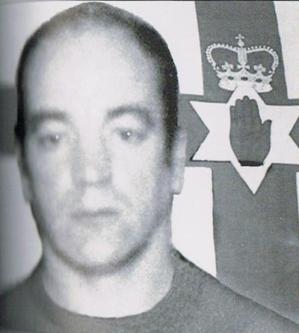
Robert John Jackson, also known as The Jackal, was a Northern Irish loyalist paramilitary and part-time soldier. He was a senior officer in the Ulster Volunteer Force (UVF) during the period of violent ethno-nationalist conflict in Northern Ireland known as the Troubles. Jackson commanded the UVF's Mid-Ulster Brigade from 1975 to the early 1990s, when Billy Wright took over as leader.
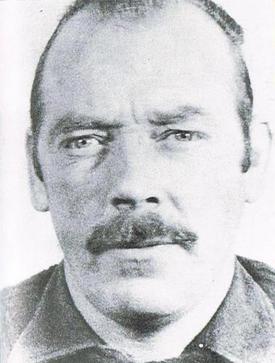
William Henry Wilson Hanna MM was a high-ranking Ulster loyalist who founded and led the Mid-Ulster Brigade of the Ulster Volunteer Force (UVF) until he was killed, allegedly by Robin Jackson, who took over command of the brigade.
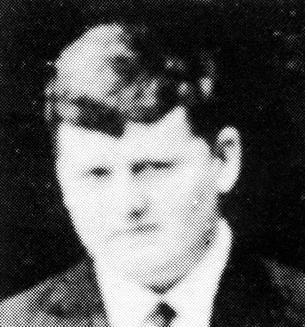
John Francis Green, was a leading member of the North Armagh Brigade of the Provisional Irish Republican Army. He was killed in a farmhouse outside Castleblayney, County Monaghan, by members of the Mid-Ulster Brigade of the Ulster Volunteer Force (UVF). According to Intelligence Corps member Fred Holroyd, Special Reconnaissance Unit officer Robert Nairac was involved in Green's killing. Green's was one of the 87 killings attributed by the Pat Finucane Centre to the group of Ulster loyalist paramilitaries, Ulster Defence Regiment soldiers and Royal Ulster Constabulary officers known as the Glenanne gang. No one was ever prosecuted for the killing.

The Glenanne gang or Glenanne group was a secret informal alliance of Ulster loyalists who carried out shooting and bombing attacks against Catholics and Irish nationalists in the 1970s, during the Troubles. Most of its attacks took place in the "murder triangle" area of counties Armagh and Tyrone in Northern Ireland. It also launched some attacks elsewhere in Northern Ireland and in the Republic of Ireland. The gang consisted of soldiers from the British Army's Ulster Defence Regiment (UDR), police officers from the Royal Ulster Constabulary (RUC), and members of the Mid-Ulster Brigade of the Ulster Volunteer Force (UVF). Twenty-five UDR soldiers and RUC police officers were named as purported members of the gang. Details about the group have come from many sources, including the affidavit of former member and RUC officer John Weir; statements by other former members; police, army and court documents; and ballistics evidence linking the same weapons to various attacks. Since 2003, the group's activities have also been investigated by the 2006 Cassel Report, and three reports commissioned by Irish Supreme Court Justice Henry Barron, known as the Barron Reports. A book focusing on the group's activities, Lethal Allies: British Collusion in Ireland, by Anne Cadwallader, was published in 2013. It drew on all the aforementioned sources, as well as Historical Enquiries Team investigations. The book was the basis for the 2019 documentary film Unquiet Graves, directed by Sean Murray.
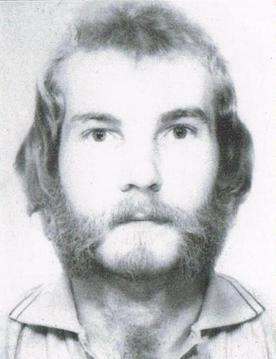
Harris Boyle was an Ulster Defence Regiment (UDR) soldier and a high-ranking member of the Ulster Volunteer Force (UVF), a Northern Irish loyalist paramilitary organisation. Boyle was implicated in the 1974 Dublin and Monaghan bombings, and took part in the attack at Buskhill, County Down when an armed UVF gang wearing British Army uniforms ambushed The Miami Showband at a bogus military checkpoint. The popular Irish cabaret band was driving home to Dublin after a performance in Banbridge. He was one of the two gunmen killed when the bomb they were loading onto the band's minibus exploded prematurely. He is sometimes referred to as Horace Boyle.
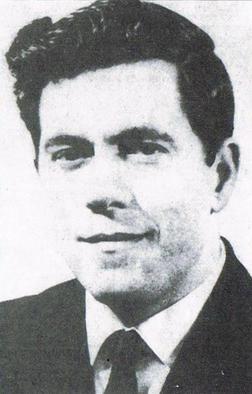
Robert William McConnell, was an Ulster loyalist paramilitary who allegedly carried out or was an accomplice to a number of sectarian attacks and killings, although he never faced any charges or convictions. McConnell served part-time as a corporal in the 2nd Battalion Ulster Defence Regiment (UDR), and was a suspected member of the Ulster Volunteer Force (UVF).

Peter Joseph Cleary was an Irish republican and a leading member of the 1st Battalion of the Provisional Irish Republican Army (IRA)'s South Armagh Brigade. He held the rank of Staff Officer and served as the unit's treasurer. He was implicated by journalist and author Joe Tiernan in the killing of Ulster Defence Regiment (UDR) corporal and alleged Ulster Volunteer Force (UVF) member Robert McConnell. Ten days after McConnell's killing, Cleary was shot dead by the Special Air Service (SAS) after being arrested at the home of his girlfriend outside Forkhill. He was the first person in Northern Ireland to be killed by the SAS, following the admission of their deployment there in January 1976. According to the SAS, he was shot after attempting to take the rifle from the officer who was guarding him in a bid to escape.

William "Frenchie" Marchant was a Northern Irish loyalist and a high-ranking volunteer in the Ulster Volunteer Force (UVF). He was on a Garda list of suspects in the 1974 Dublin car bombings, and was allegedly the leader of the Belfast UVF unit known as "Freddie and the Dreamers" which hijacked and stole the three cars which were used in the bombings.
James Andrew Hanna, also known as Red Setter, was a senior member of the Northern Irish loyalist paramilitary organisation, the Ulster Volunteer Force (UVF) until he was shot dead by his subordinates, allegedly for being a criminal informant for British military intelligence. Journalists Joe Tiernan and Kevin Myers have described Hanna as the senior paramilitary leader of the UVF and that he was part of the UVF unit that planted car bombs in Dublin in December 1972 and January 1973 which left three people dead and 145 injured. Tiernan has also alleged that Hanna's primary handlers were four British Army Intelligence Corps officers, who frequently visited his home in Lisburn.
John Oliver Weir is an Ulster loyalist born and raised in the Republic of Ireland. He served as an officer in Northern Ireland's Royal Ulster Constabulary's (RUC) Special Patrol Group (SPG), and was a volunteer in the illegal Ulster Volunteer Force (UVF). As a member of the UVF's Mid-Ulster Brigade led by Robin "the Jackal" Jackson, Weir was a part of the Glenanne gang, a group of loyalist extremists that carried out sectarian attacks mainly in the County Armagh area in the mid-1970s.

The Jonesborough ambush took place on 20 March 1989 near the Irish border outside the village of Jonesborough, County Armagh, Northern Ireland. Two senior Royal Ulster Constabulary (RUC) officers, Chief Superintendent Harry Breen and Superintendent Bob Buchanan, were shot dead in an ambush by the Provisional IRA South Armagh Brigade. Breen and Buchanan were returning from an informal cross-border security conference in Dundalk with senior Garda officers when Buchanan's car, a red Vauxhall Cavalier, was flagged down and fired upon by six IRA gunmen, who the policemen had taken for British soldiers. Buchanan was killed outright whilst Breen, suffering gunshot wounds, was forced to lie on the ground and shot in the back of the head after he had left the car waving a white handkerchief. They were the highest-ranking RUC officers to be killed during the Troubles.
Albert Wallace "Ginger" Baker is an Ulster loyalist who was convicted of four murders carried out by the Ulster Defence Association (UDA), of which he was a leading member. He turned himself in to the police in 1973 after throwing a hand grenade into a bus transporting Catholic workmen in East Belfast, Northern Ireland, which killed one man. He admitted to this killing and those of three other Catholics the previous year, as well as 11 armed robberies. He was sentenced to 25 years imprisonment for the four murders.
Between 26 November 1972 and 20 January 1973, there were four paramilitary bombings in the centre of Dublin, Ireland. Three civilians were killed and 185 people were injured. No group ever claimed responsibility for the attacks and nobody was ever charged in connection with the bombings. The first bombing in Burgh Quay may have been carried out by former associates of the Littlejohn brothers who were Secret Intelligence Service provocateurs, in a successful attempt to provoke an Irish government clampdown against the Provisional IRA, while the other three bombings were possibly perpetrated by loyalist paramilitaries, specifically the Ulster Volunteer Force (UVF), with British military or intelligence assistance. The UVF claimed in 1993 to have carried out the 1974 Dublin and Monaghan bombings which incurred the greatest loss of life in a single day throughout the 30-year conflict known as the Troubles.
The Special Reconnaissance Unit, also known as the 14 Field Security and Intelligence Company, was a unit of the British Army's Intelligence Corps which conducted covert operations in Northern Ireland during the Troubles. It conducted undercover surveillance operations against suspected members of Irish republican and Ulster loyalist paramilitary groups. Members of the unit were recruited from regular Army battalions and trained in an eight-week course by the Special Air Service (SAS). The unit, then numbering 120 men, was deployed to Northern Ireland in November 1972. Their responsibilities included intelligence gathering and assessment and tracking down and neutralising suspected paramilitaries. Allegations of collusion with loyalist paramilitaries were made against the unit. In 1987, the unit became part of the newly formed United Kingdom Special Forces directorate, and formed the core of the new Special Reconnaissance Regiment in 2005..
References
- 1 2 Ambush: the war between the SAS and the IRA, James Adams, Robin Morgan & Anthony Bambridge, Pan, London 1988 ISBN 0-330-30893-9
- ↑ Excerpt from Ken Livingstone's maiden speech, Hansard Parliamentary Debates, vol 118, 7 July 1987.
- ↑ War without Honour: True Story of Military Intelligence in Northern Ireland, Fred Holroyd & Nick Burbridge, Medium: 1989; ISBN 1-872398-00-6
- ↑ Report of the Independent Commission of Inquiry into the Dublin and Monaghan Bombings, December 2003, p. 179
- ↑ Interim Barron report (2003), p. 179, paragraph 2
- ↑ Page 179, paragraph 5, of the Interim Barron report 2003
- ↑ 3 February 2004 Sub-Committee on the Barron Report public hearings [ permanent dead link ]
- 1 2 3 4 5 6 Mr Justice Henry Barron's statement to the Oireachtas Joint Committee, 10 December 2003, also repeated up to word "... inquiry", p. 203 of Barron Report
- ↑ Report on the Report of the Independent Commission of Inquiry into the Dublin and Monaghan Bombings, Dublin: 2003, p. 262